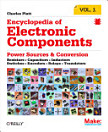Cutting-Edge Chipsets
About this ebook
Beginning with essential principles of transistor operation and instruction set architecture, the text progresses through three main sections that build upon each other. The journey starts with foundational semiconductor concepts, advances to current design techniques like branch prediction and cache hierarchy, and culminates in emerging technologies such as quantum computing and neuromorphic chips. Through detailed case studies and technical illustrations, readers gain practical insights into how processor designs optimize competing factors like performance, power consumption, and manufacturing costs.
What sets this book apart is its interdisciplinary approach, connecting computer architecture with materials science and electrical engineering while maintaining a clear focus on practical applications. Using real-world examples and detailed technical specifications, it helps professionals and students understand the reasoning behind design decisions in modern computing systems. The text effectively bridges the gap between theoretical knowledge and practical implementation, making it an invaluable resource for electronics engineers and computer architects looking to deepen their understanding of contemporary processor design.








